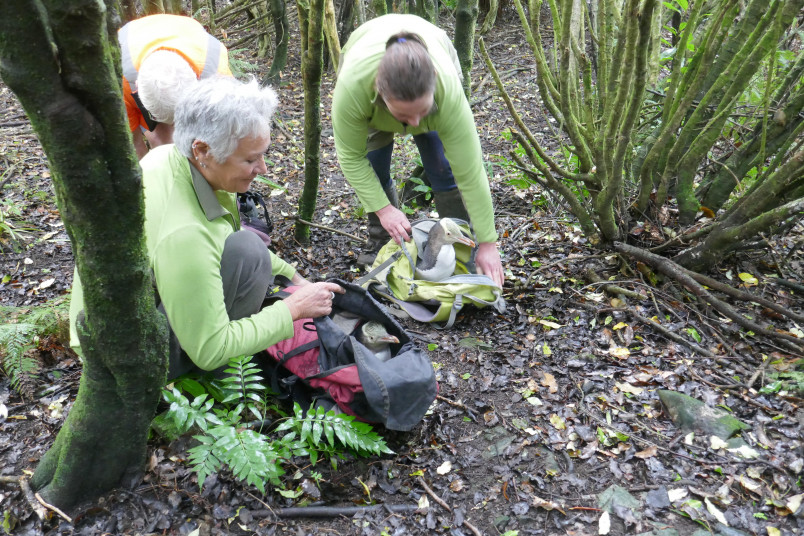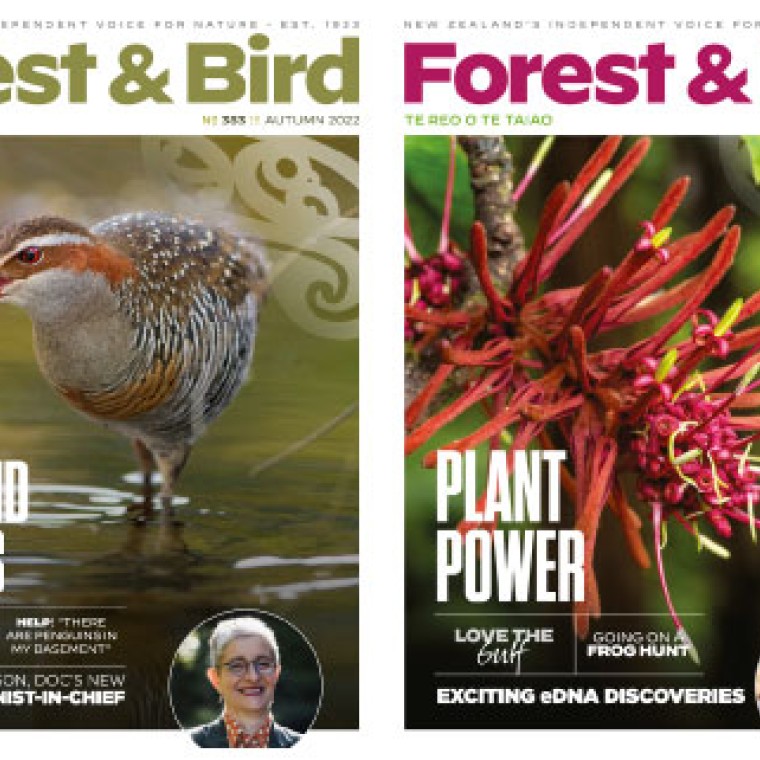Six starving birds were rehabilitated and returned to Forest & Bird’s Te Rere sanctuary thanks to a super-human team effort.
By Fergus Sutherland

Credit - Fergus Sutherland
Earlier this year, six yellow-eyed penguins had to be rescued from almost certain starvation and taken to the Penguin Place for rehabilitation. A month later, the now healthy birds were returned to Te Rere, in the Catlins, probably somewhat surprised to be back home after their 350km round trip to Dunedin.
Hoiho live and breed in the predator-free coastal forest at Forest & Bird’s Te Rere penguin sanctuary, which is located on an extremely isolated and wild part of the Southland coastline.
Forest & Bird and Department of Conservation staff discovered the seriously underweight birds while monitoring them during March. Their rescue was part of a wider intensive effort by many penguin conservationists on the Otago and Southland coast to save birds that entered their annual four-week March–April moult period seriously underweight.
Unfortunately, this problem with hoiho is a continuation of a trend. The past four years have seen a precipitous decline in penguin numbers and breeding success as their favoured food species diminish and diseases take an increasing toll.
Many observers see these changes as results of the persistently warming climate as well as the on-going pressure on the food chain and seabed habitat from fishing activities.
There are other threats to the penguins on land – predators such as stoats and disturbance by some over-zealous tourist photographers who frequently unthinkingly get in the way of birds getting ashore to feed their young.
However, these threats hardly exist at Te Rere where human visitors are rare and intensive predator control is maintained with 50 manual and 80 automatic rat, stoat, and cat traps.
Sadly, despite this protection from invasive aliens of all sizes on land, Te Rere’s hoiho population is affected by what they encounter in the ocean, including overfishing and climate impacts.
The reserve had a population of 50 in 2016. Now, five years later, it is a much reduced 12.
Although there were four nests this year, all the chicks succumbed to diptheria at an early age, so, for the first time since the reserve was established in 1981, no chicks successfully fledged during the 2020–21 summer breeding season.
Despite hoiho’s precarious state at Te Rere, the work of the Southland Branch of Forest & Bird continues, undertaken with the aid of the Department of Conservation, Penguin Place (the region’s main penguin rehabilitation centre), the Dunedin Wildlife Hospital, and the Yellow Eyed Penguin Trust, who are all vital partners in this work.
We hope the complex ecosystem that is our ocean will be better managed by the government and readjust in a way that allows hoiho to recover.
*The penguins’ return home to Forest & Bird’s Te Rere reserve was captured on video – check it out below.
Recorded by Fergus Sutherland
Fergus Sutherland is the caretaker at Forest & Bird’s Te Rere scientific penguin reserve in Southland. He discovered the penguins on farmland there in 1981 and persuaded the Society to purchase the land, which was being bulldozed by the farmer owner. The reserve is looked after by Forest & Bird’s volunteers from the Southland and Otago Branches, and it celebrates its 40th anniversary this year.
What is Forest & Bird doing?
Nationally, Forest & Bird has been advocating to save hoiho in numerous ways, including demanding the government establish a zero-bycatch goal so hoiho don’t get inadvertently killed by fishing nets, campaigning for new coastal marine reserves offshore from the Catlins (there are currently none depite Curio Bay being a nursery for Hector’s dolphins), and calling for a set net ban in coastal waters where hoiho are known to feed.
By making a gift to Forest & Bird, you can support our work to save New Zealand’s largest and rarest penguin from vanishing forever. Experts say we only have a few years to better protect this species, which is under multiple pressures from climate and fishing impacts. It’s easy to make an online donation at www.forestandbird.org.nz.
You can also help the Te Rere penguins directly by supporting the Southland Branch of Forest & Bird by joining the local branch or attending work days.
*A version of this article first appeared in the Spring 2021 issue of Forest & Bird magazine
